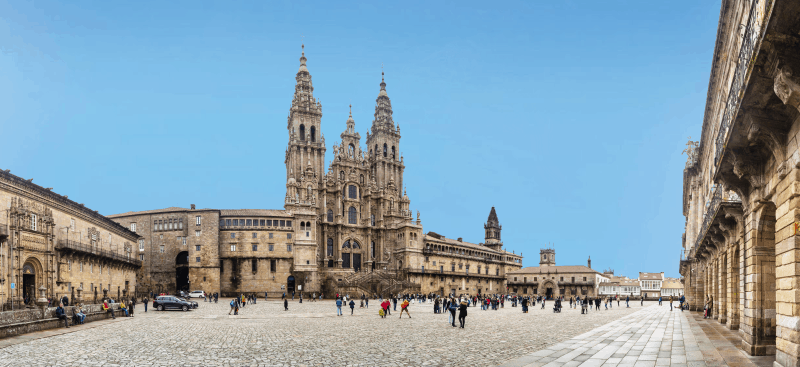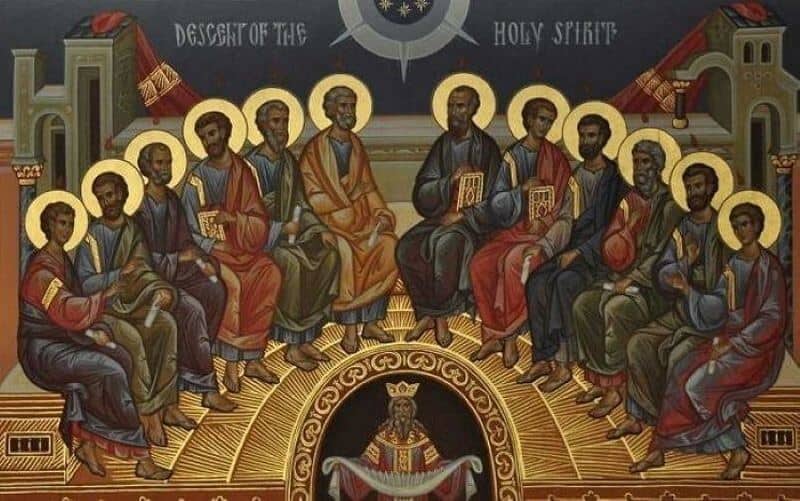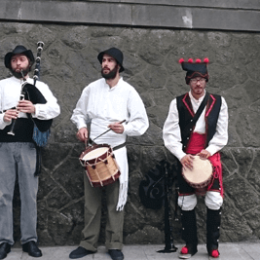St. James the Apostle is a capital character in Christianity and is especially relevant for the history of Spain and the Camino.
As Apostle’s Day approaches, we wanted to take this opportunity to reflect on his life and meaning, including his relationship with Jesus and his impact on Galician culture and traditions. In this blog post, we will delve into the life of St. James, exploring his profound relationship with Jesus and the fascinating history behind the Camino de Santiago.
St. James story and his legacy continue to inspire people all over the world, as thousands of pilgrims visit his Cathedral every year. He is revered as the patron saint of Spain and the pilgrims who embark on the Camino de Santiago.
St. James the Apostle was one of the twelve apostles of Jesus Christ. He is often referred as James the Greater to distinguish him from another apostle with the same name.
St. James was born in the small town of Bethsaida in Galilee, around the first century A.D. He was the son of Zebedee and Salome and the brother of another apostle, John the Evangelist. Together with Peter and John, James was part of Jesus’ inner circle, witnessing several pivotal moments of Jesus’ ministry.

His impetuosity and his brother’s were known at the time, and their temperament earned them the nickname “Sons of Thunder”. They seeked positions of prominence within Jesus’ kingdom, and even requested to sit at Jesus’ right and left hands in his glory. Jesus responded by teaching them about humility and servanthood.

Despite this, both James and John held a special place in Jesus’ heart. They were present during the Transfiguration, where Jesus revealed his divine glory to them atop a mountain. James also witnessed the miracle of the raising of Jairus’ daughter and accompanied Jesus during his agonizing prayer in the Garden of Gethsemane.
Following Jesus’ crucifixion and resurrection, St. James became a fervent proclaimer of the Gospel, spreading the message of Christ throughout the Roman Empire. His missionary work took him to Spain, where he encountered significant resistance. Nevertheless, he persevered, gaining a small following of converts.
James’ life was cut short when he became the first apostle to be martyred for his faith. But his legacy continued when his body miraculously traveled by boat to the coast of Galicia. His remains were later discovered in a field, giving rise to the establishment of the city of Santiago de Compostela, which means “St. James of the Field of Stars.” The Cathedral of Santiago de Compostela, built in his honor, quickly became the focal point for pilgrims that we know today.

Since his tomb was discovered in the early 9th century, the Camino became a significant pilgrimage site, rivaling Rome and Jerusalem in its importance. Although the network of paths from various European locations has changed, the Camino remains in the well-established routes we know today.
In Spain, St. James is not only revered as an apostle but also known as Santiago Matamoros (St. James the Moor-slayer). He is believed to have appeared during the medieval battles between Christians and Moors, fighting alongside the Christian armies and securing victory. This image of St. James as a warrior saint became an emblem of Spanish nationalism and played a significant role in the Reconquista, the Christian reconquest of the Iberian Peninsula.








